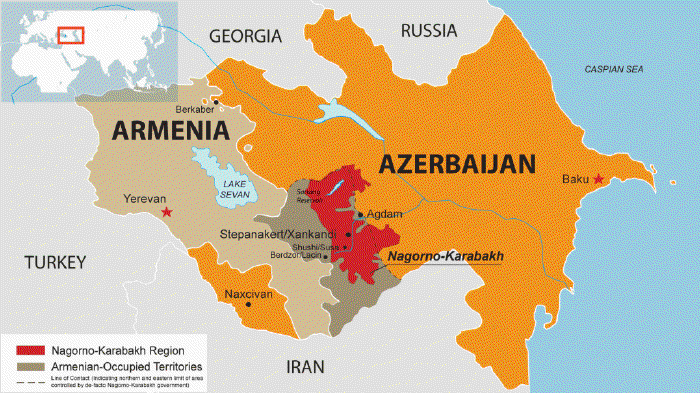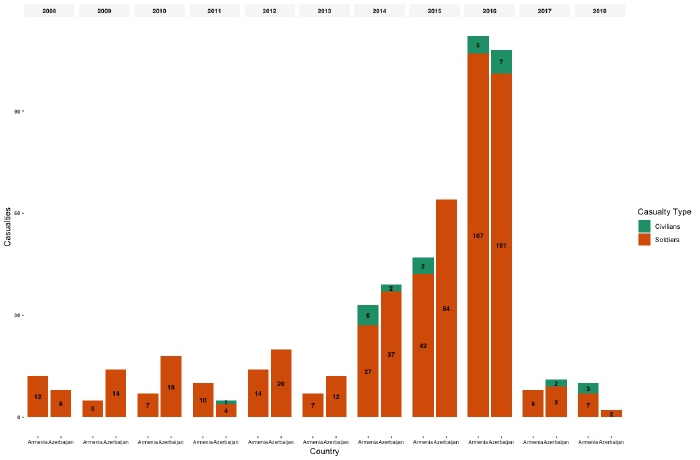Nagorno-Karabakh Continues to Strain Armenian-Azerbaijani Ties
Published 2019-05-27
This Wednesday, May 29th, Arsenal and Chelsea will square off in the Europa League final in Baku, Azerbaijan. Arsenal will be at a disadvantage. The club decided that their star midfielder from Armenia, Henrikh Mkhitaryan, would not travel with the team amid concerns for the soccer star’s safety.
Arsenal’s decision reignites controversy surrounding UEFA’s decision to allow Azerbaijan to host the final. Organizations like Amnesty International criticized the final match’s location, pointing to Azerbaijan’s human rights violations. The controversy highlights the tension that still exists between Armenia and Azerbaijan in the wake of the 3-year anniversary last month of the 4 Day War between the two countries.

The animosity between the two countries centers around the mountainous region of Nagorno-Karabakh and the disputed state therein, the Republic of Artsakh. Though internationally recognized as part of Azerbaijan, the state is populated mostly by Armenians and declared its independence in 1991. Dispute over the territory between Armenia and Azerbaijan precedes the formation of the Soviet Union, though under Soviet rule tensions were kept under control.
As both countries gained their independence in the early 1990’s, hostilities over the region escalated. The conflict turned violent and displaced hundreds of thousands of Armenians and Azerbaijanis before the countries reached a ceasefire agreement in 1994. That same year Armenians in the region voted to create the unrecognized Republic of Artsakh.

Border skirmishes reignited in 2008 following presidential election protests in Armenia. Armenian leaders accused Azerbaijan forces of seeking to capitalize on political discord in Armenia. Both civilian and military casualties at the border have since become the norm. The violence reached a crescendo in 2016. Each side sustained over 100 military casualties as well as several civilian deaths. Both sides accused each other of initiating the outbreak in violence. The countries reached another ceasefire agreement, but hostilities remain high and sporadic casualties frequent.
While the controversy surrounding Mkhitaryan underscores enduring tensions, there is hope that the countries can reach a peaceful compromise. Last year, Armenians initiated their own Velvet Revolution. Peaceful protests forced the resignation of prime minister Serzh Sargsyan, who amended the constitution to remove limits on his term. The protests received international acclaim for their nonviolent nature.
Instrumental to the success of the protests was the participation of women in large numbers. Their presence kept the demonstrations peaceful, which in turn allowed for broader participation in the protests. Many hope this broad support will establish a long-lasting democracy in Armenia. Just as important, however, is the notion that the political support of women can drive peaceful change. There is evidence to suggest that excluding women from cease-fire negotiations makes them more likely to unravel. In the wake of the Velvet Revolution, the time is ripe for women in both countries to emerge as leaders who demand peace in the perpetual conflict over Nagorno-Karabakh. With greater inclusion of women in the peace-making process, an older Mkhitaryan may be able to dazzle both Armenian and Azerbaijani crowds with his soccer skills.
